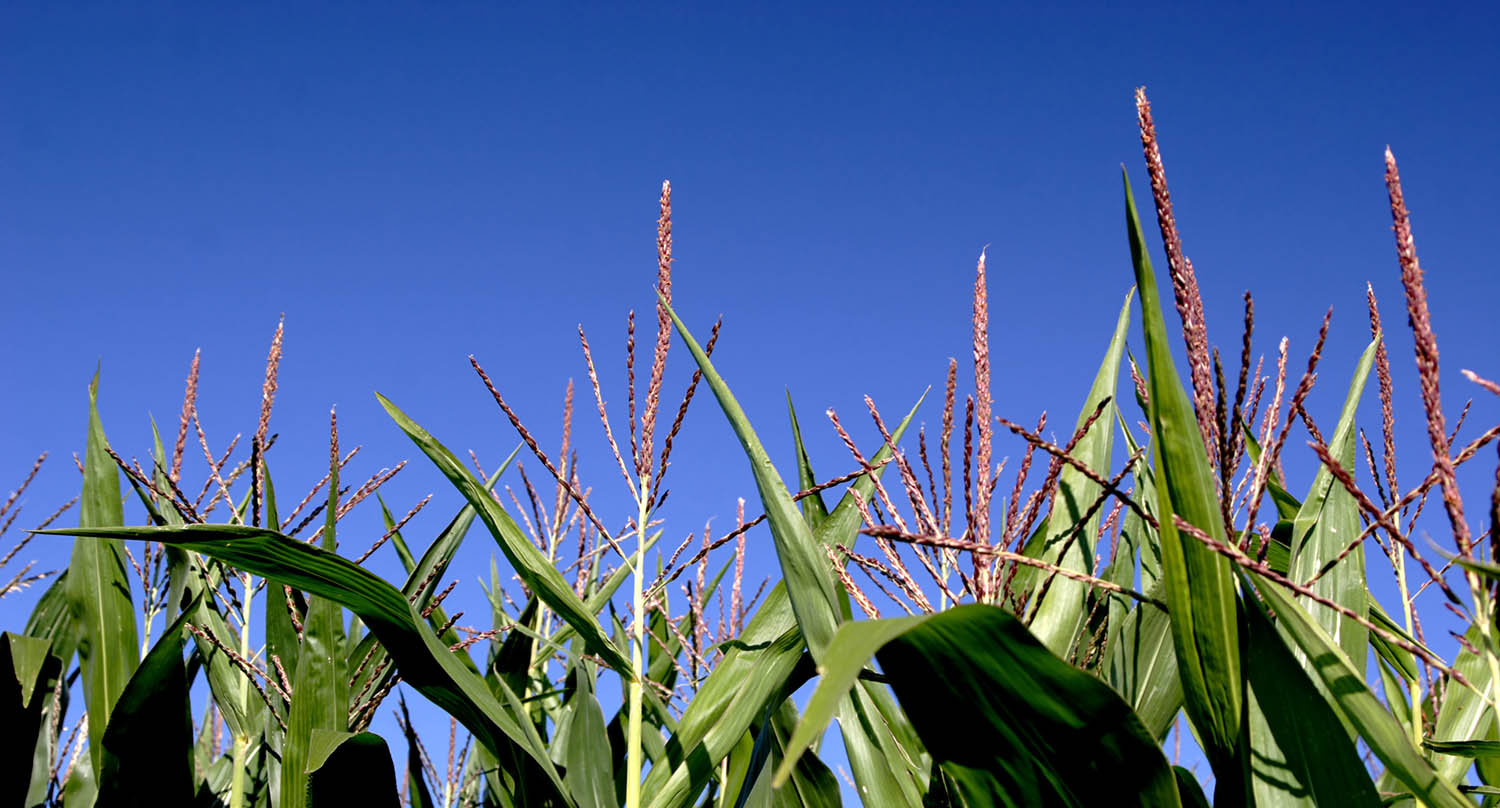Corn Yield Recovery with At-Tasseling/Early Silking N Application
Corn Yield Recovery with At-Tasseling/Early Silking N Application

In the past decade, over 50 % of the years have given corn growers some difficulty with wet early season conditions. These conditions can complicate corn nitrogen (N) management. Sustained wetness can delay/prevent N application, resulting in uncertainty in corn’s N status at-tasseling/early silking (VT/R1), when ear development commences. Even with unlimited N availability, corn geneticists and physiologists have found that corn N uptake might be only 75% complete at VT/R1 (Figure 1).
During ear formation about 60% of final total N uptake is allocated to corn grain. Of that 60%, a bit more than half may be remobilized from leaves, leaf blades and stalks. The rest comes from soil organic matter mineralization and earlier N fertilizer applications. When the corn producer suspects that these N sources are going to be inadequate, the stage is set for a needed VT/R1 fertilizer N application. But a question remains – can an N application made this late recover lost yield potential?
With support from the Kentucky Corn Growers Association, we researched this question at 13 different locations in 2023 and 2024. We created different levels of early season N availability and consequent corn N nutrition across Kentucky, achieving a range in N nutrition, corn planting dates, and seasonal weather (Table 1). We cooperated with the Corn Variety Testing Program (Cam Kenimer) to get five locations and with Wheat Tech Research (Brad Wilks) to get eight locations. In 2023, corn planting began in April and ended in May. In 2024, all locations were planted in April (Table 1).
At each location we had 3 rates of early N (75, 150 and 225 lb N/A) applied at V4, at each of 2 rates of late N (0 and 75 lb N/A) applied at VT/R1. The six treatments were replicated four times. The N source was Super U – urea co-prilled with both a urease inhibitor (NBPT) and a nitrification inhibitor (DCD). The urea was hand broadcast to each plot, at each application time. Leaf tissue samples were taken at R1, grain yield was determined by combine harvest, and samples were taken from harvested grain at the eight locations planted to DeKalb C65-95. Only yield will be discussed here.
Average site grain yield varied quite widely, from 86 to 262 bu/A (Table 2). As we begin to look at the data in Table 2, there are some things to take note of. First, in 2023, there were no differences among any of the treatments at sites 5 and 6, and in 2024 there was little difference among the treatments at site 10 (yellow highlighted columns). At the other ten sites, the treatment with a single application of 75 lb N/A at V4 did not give the highest yield, indicating that treatment did not supply sufficient N nutrition and yield was impaired (Table 2). Additionally, in 2024, yields at three sites, 9, 11 and 12, were hurt to varying degrees by drought.
Looking more specifically at Table 2’s second and third data rows, where the 75(V4) + 75(VT/R1) and 150(V4) treatments are compared, at eight sites (highlighted in green) the additional 75 lb N/A at VT/ R1 raised yield to a level equal to or exceeding that found with all 150 lb N/A at V4 (Table 2). Two sites, 4 and 12 (highlighted in red), exhibited the opposite trend.
At higher N rates, only sites 1, 2 and 3 gave significant yield increases to N applications totaling more than 150 lb N/A (Table 2). For these three sites, in the fourth and fifth data rows where the 150(V4) + 75(VT/R1) and 225(V4) treatments are compared, the additional 75 lb N/A at VT/R1 increased yield to a level equal to or exceeding the yield observed with 225 lb N/A at V4 (highlighted in blue, Table 2).
In summary, this study indicates that a late VT/R1 N application could generally reduce corn N deficiency to the point that yield potential (at a particular total N rate) was fully recovered. That said, it should be noted that all this corn received at least 75 lb N/A at V4, so there was no instance of severe N deficiency. In fact, there was little to no further response to additional N at three of the thirteen sites. Further, VT/R1 application may involve specialized ground equipment or aerial application to get over the crop, incurring additional cost to this application timing. But if needed, this late N timing can be beneficial.
Optional Citation: Grove J., Ritchey E., 2025. Corn Yield Recovery with At-Tasseling/Early Silking N Application. Kentucky Field Crops News, Vol 1, Issue 2. University of Kentucky, February 14, 2025.


